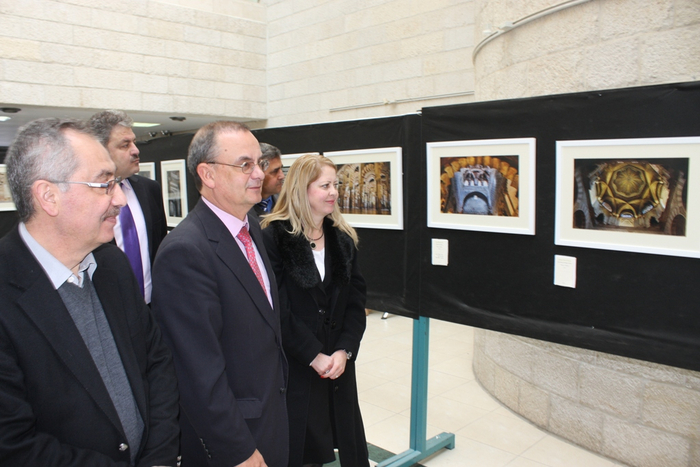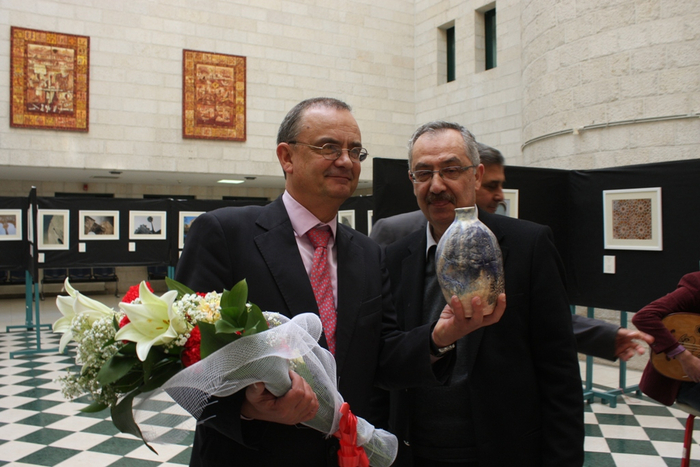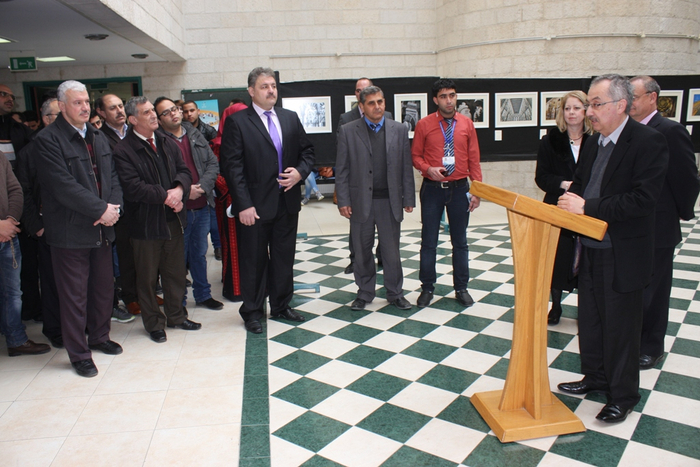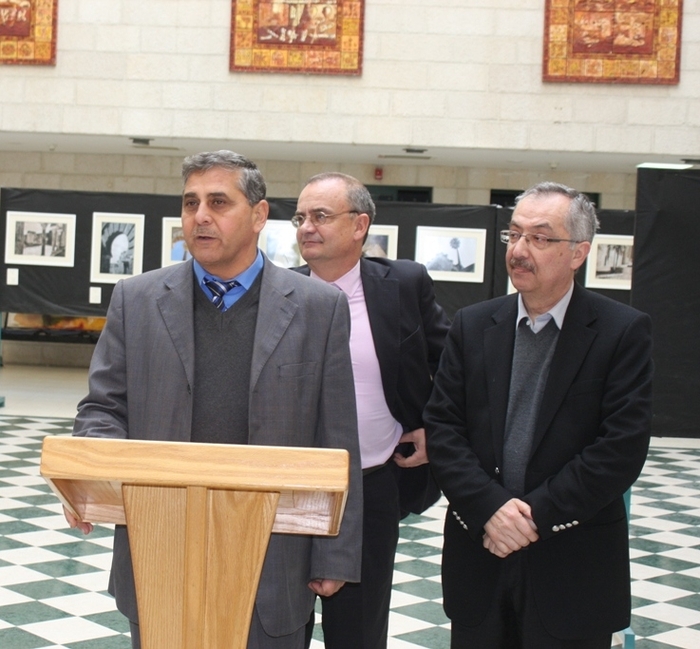An-Najah National University Hosts the Closing Ceremony for the Exhibition From Qurtuba to Cordoba
In cooperation with General Spanish Consulate in Jerusalem, An-Najah National University hosted the closing ceremony for the Exhibition “From Qurtuba to Cordoba” on Wednesday, January 15th, 2014, in the Chess Square at the Faculty of Fine Arts in the new campus. The Exhibition consisted of tens of photographs which document the cultural and architectural, Islamic and Arabic heritage, and represents the Andalusian culture which the city of Qurtuba, currently known in Spanish as “Cordoba”, has witnessed.

The ceremony was attended by the Spanish Consul General, Mr. Juan José Escobar, Prof. Maher Natsheh, the Acting President of An-Najah University, Dr. Kherieh Rassas, VP for International and Strategic Affairs, Dr. Mohammad Hannon, VP for Administrative Affairs, Dr. Hassan Naerat, the Dean of the Faculty of Fine Arts, Mrs. Christel Duval, the Director of the French Institute in Nablus, Mrs. Layla Aloul, representing the Mayor of Nablus, A number of teachers and students representing the Qur’an Academy in Nablus, in addition to a number of University staff and students.

At the beginning of the ceremony, Prof. Nathseh welcomed his Excellency the Spanish Consul General, Mr. José and the attendees, saying that An-Najah has unique cooperation relations with several Spanish universities through the projects “Erasmus” and “Tempus”, through which students and faculty members are dispatched to finish their higher studies. He added that: “These activities contribute to reinforcing the relations between the peoples in all aspects, and would reflect positively on the development of culture”.
On a different aspect, Mr. Juan Jose Escobar, the Spanish Consul General, thanked the University and the organizers for hosting the event, and expressed his delight for being in Nablus, the oldest and most deep-rooted Palestinian city, and added: “We are proud to preserve the Islamic heritage in our country, and we will work hard to reinforce understanding with the Arab and Islamic nations”.

The photographs-displayed in the exhibition- embodies the most prominent architectural features, and presents a diverse group of detailed ornaments of symbolic remains, doors, towers, lighthouses and baths in the Spanish city of Cordoba, through examples of the “hybrid art”, being the last architectural style in Iberian Peninsula, and how it was influenced by the prosperity and cultural diversity which Andalusia has reached, and which was reflected on all aspects of life including architecture. The most prominent monuments in the city are: the mosque, the cathedral, and the architectural compound of the city of Al-Zahara.
In the old times, the city of Qurtuba contained 100 mosques, that were turned into mosques and museums; the features of which were changed due to destruction or transformation into churches, as it was the case after the King of Castile Fernando the third took over Andalusia; the remaining 13 mosques were turned into churches; nevertheless, the Islamic heritage is still present in Spanish architecture till this very day.

It is noteworthy that in the year 1994, the city of Qurtuba was declared a Human Heritage, and it is globally known for its Arabic/ Islamic past and was a Roman, a Byzantine, and a Gothic western city, before, then in the Umayyad time, it reached a high level of cultural and architectural development that made it globally famous, for the magnificence of some buildings, which are prominent examples of the Arabic architecture in Spain, such as the mosque, the Cathedral, and the Al-Zahara city Compound.
The exhibition was held in cooperation with the Faculty of Fine Arts in the University, represented by Mr. Ahmad Al-Haj Hassan, the event coordinator in the Faculty, in addition to the University’s International Relations Office.



